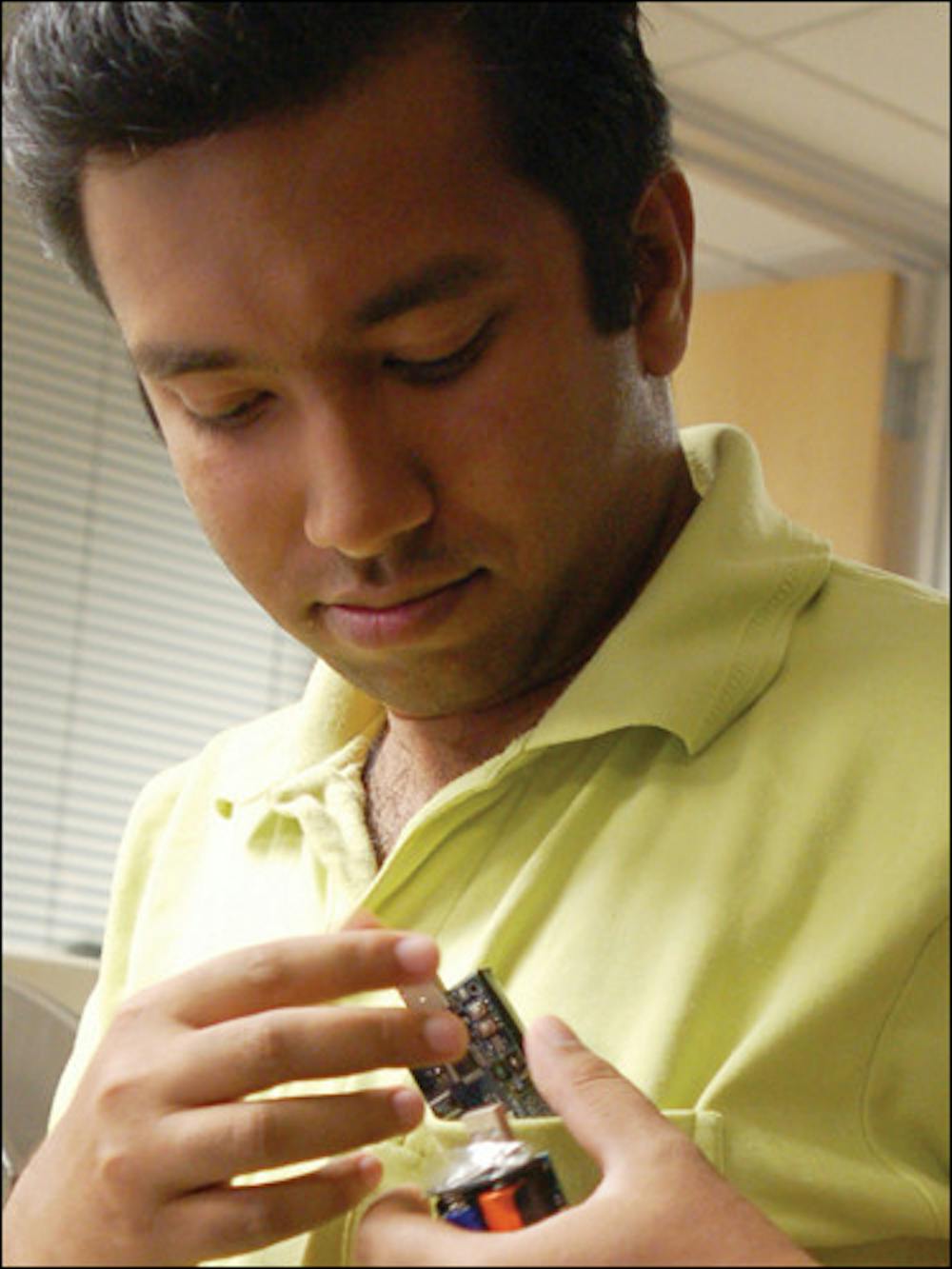In the future, cell phones will be able to display personal health information. ASU researchers are working to make sure that information is secure and private.
Sandeep Gupta, an associate professor in the computer science and engineering department and an affiliate professor in the electrical engineering department, is the faculty adviser for the Ayushman project at IMPACT.
IMPACT, or Intelligent Mobile and Pervasive Applications and Communication Technologies, is a lab at ASU that deals with mobile computing technology and is located at the Brickyard on Mill Avenue.
“The overall goal of the IMPACT lab is to create humane technologies for the ever-changing world,” Gupta said.
Ayushman which means “the blessing for a long and healthy life” in Sanskrit, started in 2003 and was awarded $400,000 to focus on the security of health-monitoring technology in 2008 for three years by the National Science Foundation.
The project works to create a secure health-monitoring system by attaching health monitors, or sensors, to clothing or inside the body and using cell phones as a base station for information collected from the monitors.
The data from the monitors is displayed on the cell-phone screen for users to view.
“The medical-devices market is growing rapidly, but what is happening is the device makers are not very sensitive to the security issues,” Gupta said.
Although the sensors were not created by the Ayushman project, the group’s work with security in health monitors and electronic devices, like the cell phone, is a new area of research and the focus of the project.
“What this research is trying to do is lay the foundation to make these medical devices secure. ... A security breach can lead to safety breaches,” Gupta said.
He said that because of the Health Insurance Portability and Accountability Act of 1996 Privacy Rule, or HIPAA, only people who are authorized, like the patient and health-care personnel, to view the information can view it.
“The overall goal is to enable safe and secure pervasive health monitoring using embedded medical devices,” Gupta said.
Besides security, Gupta said the research is looking at how the sensors can be run on limited energy.
“What we are looking into is, ‘How do you power [sensors] using the energy from motion [and] body heat?’”
When security and energy issues are resolved, then people can enjoy what the sensors and cell phone can actually do.
“You can do any kind of measurements. The sensors allow you to measure heart rate, blood glucose level, oxidation level in the blood and also they can monitor the motions, the accelerators, how active you are,” Gupta said.
He said that the devices could help monitor caloric intake and help people lose weight, besides alerting health-care personnel of any health problems a person might have.
Krishna Kumar Venkatasubramanian, a doctoral student in computer science and engineering, is the main student working on the security part of the Ayushman project.
Venkatasubramanian has been working on the project since the start.
Although he plans to graduate in the summer, he said he will use his research on pervasive health monitoring in the future.
“This field itself is coming up very fast, so my expertise in this area is going to be more relevant,” Venkatasubramanian said.
Gianni Giorgetti, a doctoral student who specializes in embedded systems and mobile computing solutions, started working with IMPACT in 2005.
“I work on the infrastructure that enables data collection,” Giorgetti said.
He is in a joint schooling program with the University of Florence in Italy as well.
He said that he believes that using the cell phone as the platform for the health-monitoring technology is better than using an actual computer.
“People that are not very familiar with computers — there is some distance between them. But everybody knows how to use a cell phone,” Giorgetti said.
Reach the reporter at reweaver@asu.edu.




